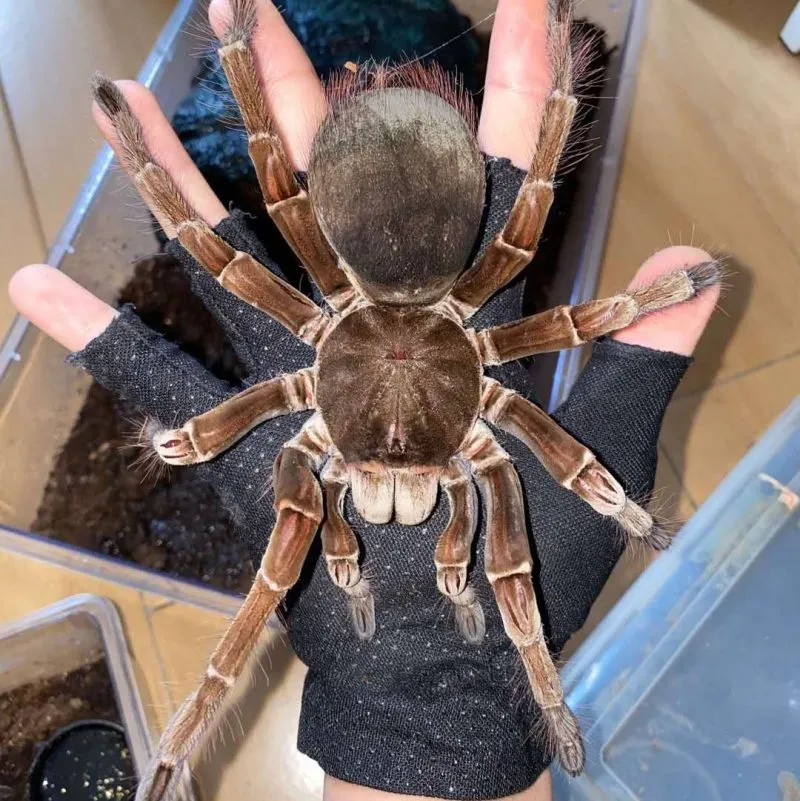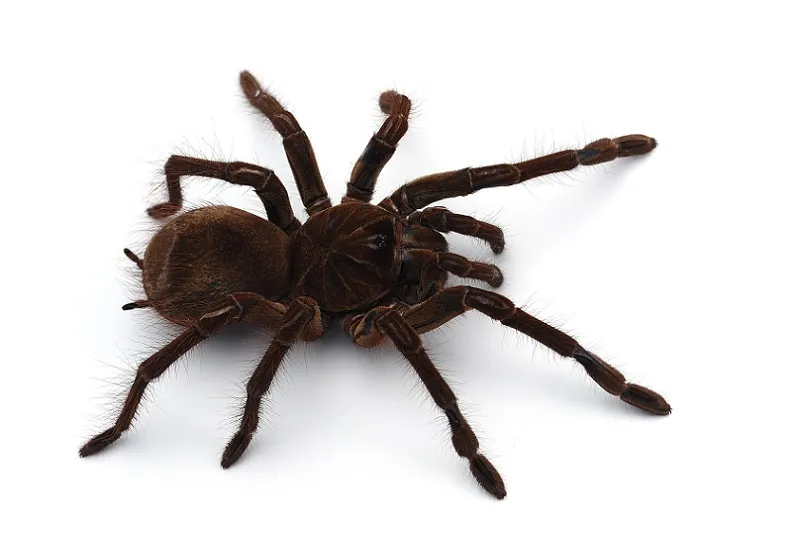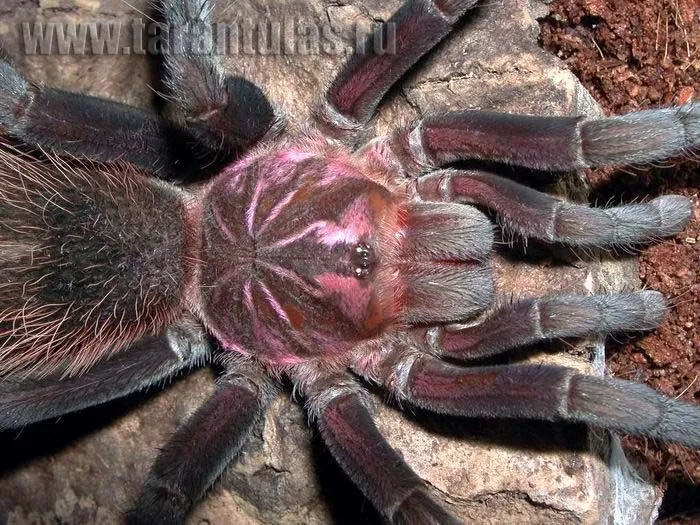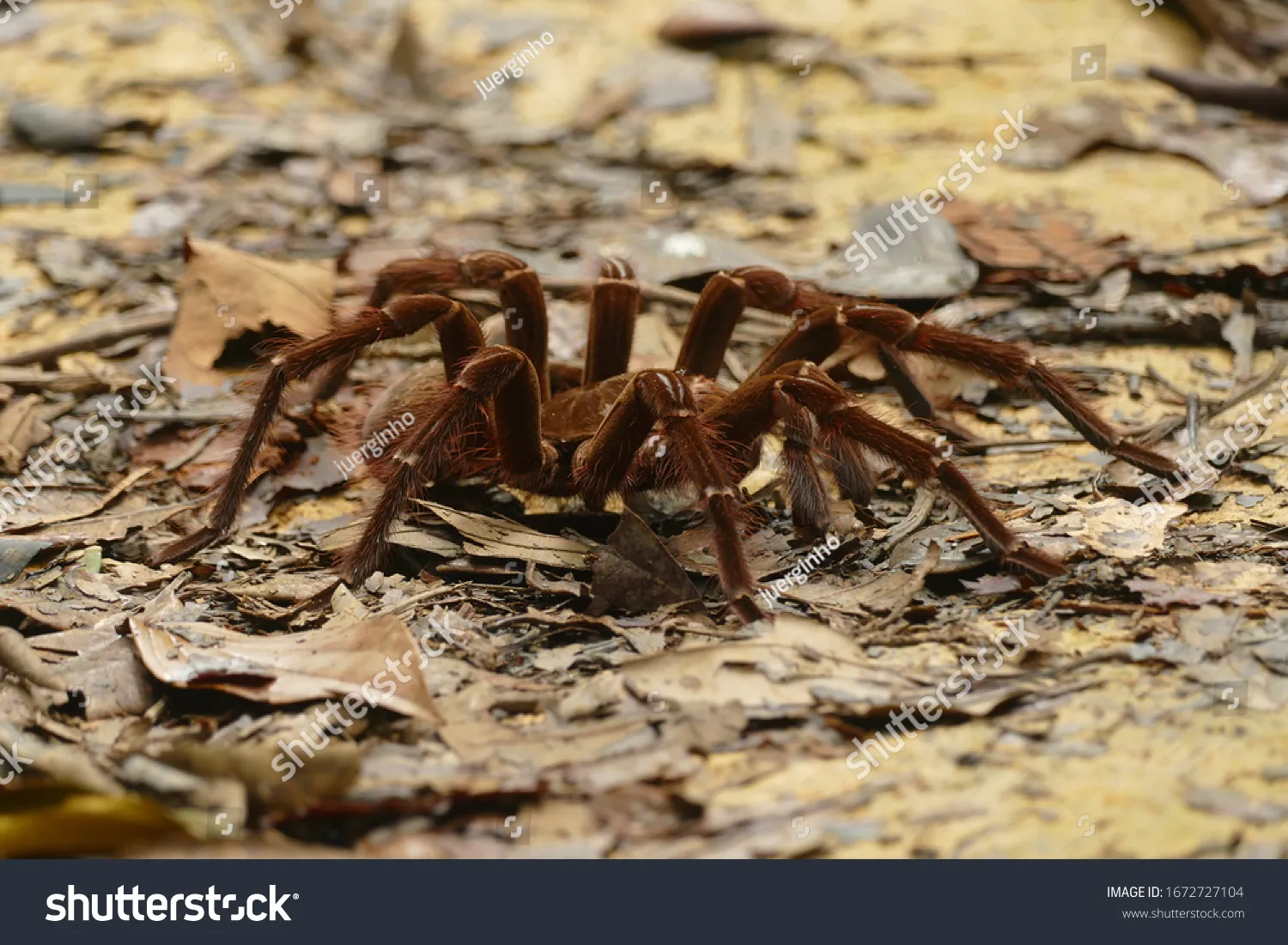What is the Goliath Birdeater Tarantula?
The Goliath Birdeater (Theraphosa blondi) is the world’s largest tarantula, a truly impressive arachnid native to the rainforests of northern South America. These giants can have a leg span of up to 12 inches, making them a fascinating and sometimes intimidating pet. Their size and unique characteristics make them a popular subject of interest for both arachnid enthusiasts and those simply curious about the natural world. Their impressive size and the fact that they are the largest spider in the world have made them very popular in the exotic pet trade. Despite their name, they rarely eat birds, although the name comes from an early illustration showing one eating a hummingbird. Understanding the Goliath Birdeater’s diet is crucial for its health and well-being in captivity.
The Natural Habitat of the Goliath Birdeater
In the wild, Goliath Birdeaters reside in the humid, tropical rainforests of South America, particularly in countries like Suriname, Guyana, and Venezuela. Their natural habitat consists of burrows they construct in the ground, often near swamps or marshes. These burrows provide shelter from predators and the harsh elements. The warm and humid environment plays a crucial role in their survival, influencing their behavior and dietary needs. In their natural environment, they are opportunistic feeders, consuming whatever prey they can subdue. This can include insects, small vertebrates, and even carrion. Replicating this environment as closely as possible is key to ensuring a healthy diet for a Goliath Birdeater in captivity, promoting natural behaviors and overall well-being. Understanding their natural environment helps pet owners provide the necessary conditions for a healthy life.
Understanding the Goliath Birdeater’s Dietary Needs

The dietary needs of a Goliath Birdeater are relatively straightforward but essential for their health and longevity. As opportunistic predators, they require a diet rich in protein to support their growth and maintain their large size. In captivity, providing the right type and amount of food is critical. Their feeding habits also reflect their natural behaviors. They are ambush predators, lying in wait for prey to come within striking distance. Their chelicerae (fangs) are used to inject venom, which immobilizes the prey, and digestive enzymes that begin to break down the prey’s tissues. The specifics of their diet, including the types of food, the frequency of feeding, and the importance of supplements, are crucial factors in maintaining their overall health and well-being. It’s about balancing their nutritional requirements with the need to simulate their natural behaviors.
Top 5 Food Facts for Goliath Birdeater Tarantulas
Fact 1 The Goliath Birdeater’s Primary Diet
The cornerstone of a Goliath Birdeater’s diet should be insects. Crickets, mealworms, and roaches are commonly used and readily available. These insects provide the necessary protein and nutrients for healthy growth. The size of the prey should be appropriate for the tarantula’s size, with juvenile tarantulas needing smaller insects. It’s crucial to gut-load the insects before feeding them to your Goliath Birdeater. This means feeding the insects nutritious foods like vegetables and commercial insect food, so they, in turn, provide your tarantula with the vitamins and minerals they need. Avoid feeding wild-caught insects, as they could carry parasites or pesticides that could harm your pet. Always ensure the insects are free of any harmful substances.
Fact 2 The Importance of Insects

Insects are the primary source of essential nutrients for Goliath Birdeaters. They offer the right balance of protein, chitin (for exoskeleton development), and other crucial vitamins and minerals. Different types of insects offer varying nutritional profiles. For example, crickets are easily obtainable and a good source of protein, while roaches are meatier and offer a richer source of nutrients. Mealworms can be used, but they are higher in fat, so moderation is key. The variety of insects can also provide mental stimulation for the tarantula, as they can engage in their natural hunting behavior. This helps keep the tarantula active and engaged. Regularly varying the insect diet contributes to their overall health and mimics the natural variation in their food sources in the wild.
Fact 3 Supplements and Enrichment
While insects form the bulk of the diet, occasional supplements can boost the nutritional value. Calcium and vitamin D3 supplements are important, especially for growing tarantulas, as they support exoskeleton development. These supplements are often available in powder form and can be dusted onto the insects before feeding. Supplementing their diet with vitamins and minerals, such as a light dusting of calcium and vitamin D3 on their prey can help maintain proper health. This is particularly true as they go through molting. Other supplements can include commercially available tarantula vitamin mixes that provide a broader spectrum of essential nutrients. The goal is to mimic the nutritional intake a Goliath Birdeater would receive in its natural habitat. Enrichment can also play a role. Offering different types of prey or varying feeding times can stimulate their natural hunting instincts.
Fact 4 Frequency of Feeding
The feeding frequency for a Goliath Birdeater depends on its age and size. Young tarantulas, or spiderlings, should be fed more frequently, sometimes every other day, as they are constantly growing. As they mature, the feeding frequency can be reduced. Adult Goliath Birdeaters typically need to be fed once or twice a week. It’s important to observe your tarantula and adjust the feeding schedule as needed. A tarantula that is refusing food might be in pre-molt. It’s also crucial not to overfeed them, as this can lead to health problems. After a successful feeding, the tarantula should appear content and not be overly hungry or aggressive. Always remove uneaten prey within 24 hours to prevent stress and potential injury to the tarantula.
Fact 5 Hydration and Water

Providing fresh, clean water is just as vital as the food itself. Goliath Birdeaters need a constant supply of water for hydration. This can be provided in a shallow water dish that is accessible but not too deep, to prevent drowning. The water should be changed regularly, ideally every day or two, to maintain its cleanliness and prevent the growth of bacteria. In addition to drinking water, they obtain some moisture from their food. Humidity is also crucial for a healthy Goliath Birdeater. This can be achieved by misting the enclosure periodically, especially in drier environments. Monitoring the humidity levels with a hygrometer ensures the tarantula is in a comfortable and healthy environment, which can help them digest food, and assists with molting.
Maintaining a Healthy Goliath Birdeater Diet
Maintaining a healthy diet for a Goliath Birdeater is essential for its overall well-being, and involves a balance of nutrition, cleanliness, and observation. Monitoring your tarantula’s weight and activity level can provide indicators of its health. A well-fed tarantula should have a plump abdomen, while a tarantula that is too thin may not be getting enough food. Regular cleaning of the enclosure and removing any uneaten food are crucial to preventing the growth of mold and bacteria. Additionally, providing a stimulating environment, such as varied substrates and hiding places, can enrich the tarantula’s life. Taking the time to observe the Goliath Birdeater and adapt your approach based on their behavior is key to ensuring a long and healthy life. Providing a nutritious and appropriate diet, combined with a suitable environment, contributes to the overall health and happiness of your Goliath Birdeater.
Common Dietary Mistakes to Avoid
Several common mistakes can be detrimental to a Goliath Birdeater’s health. Overfeeding is one of the most frequent issues, as it can lead to obesity and other health problems. Providing too much food can stress the tarantula. Another mistake is offering prey that is too large, which the tarantula may struggle to consume. Lack of variety in the diet can also lead to nutritional deficiencies. Therefore, it is important to vary the types of insects used for feeding. Finally, failing to provide fresh water can lead to dehydration, which can be fatal. Regularly check that your tarantula has access to clean water. Avoiding these common pitfalls will significantly contribute to the health and longevity of your Goliath Birdeater, ensuring you can enjoy their presence for years to come.
